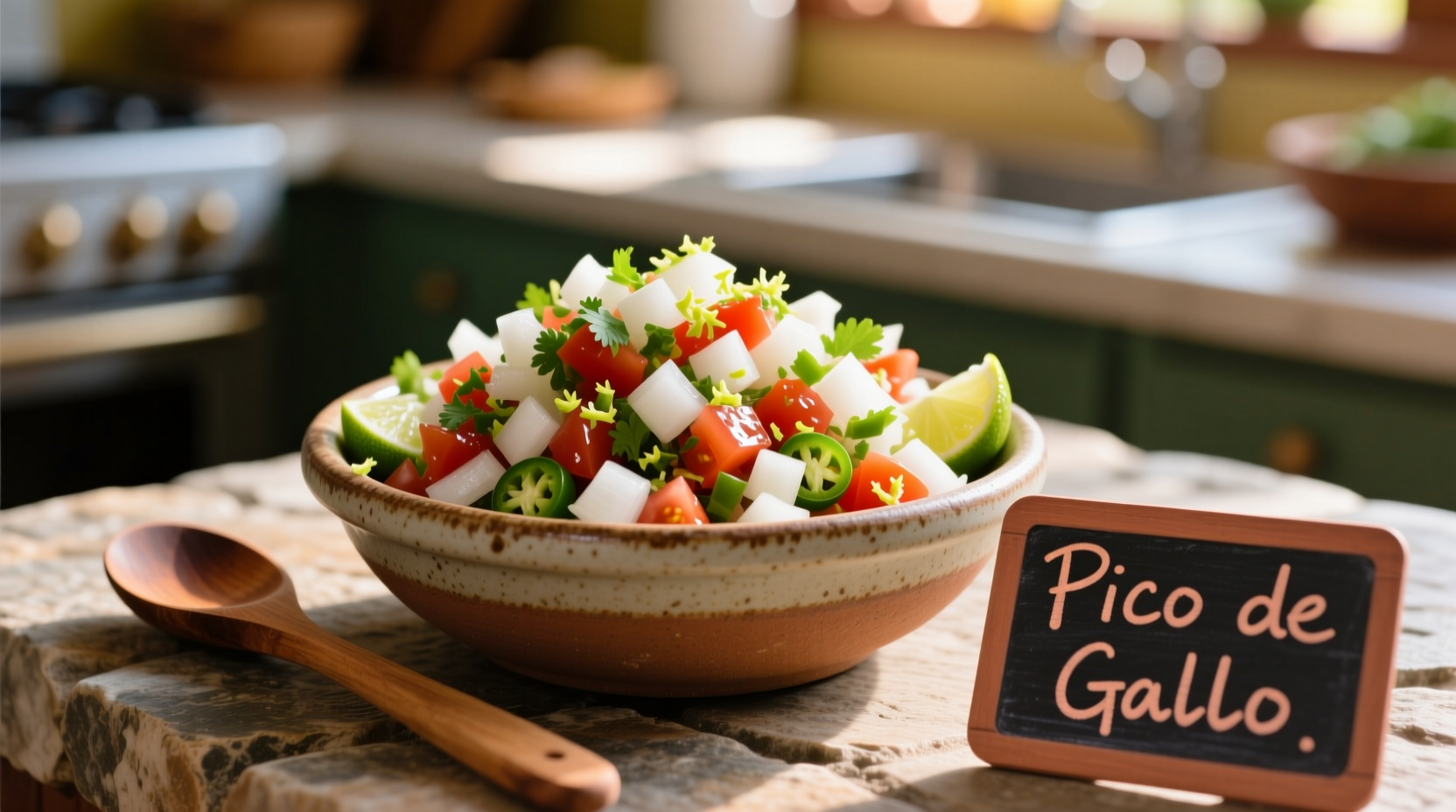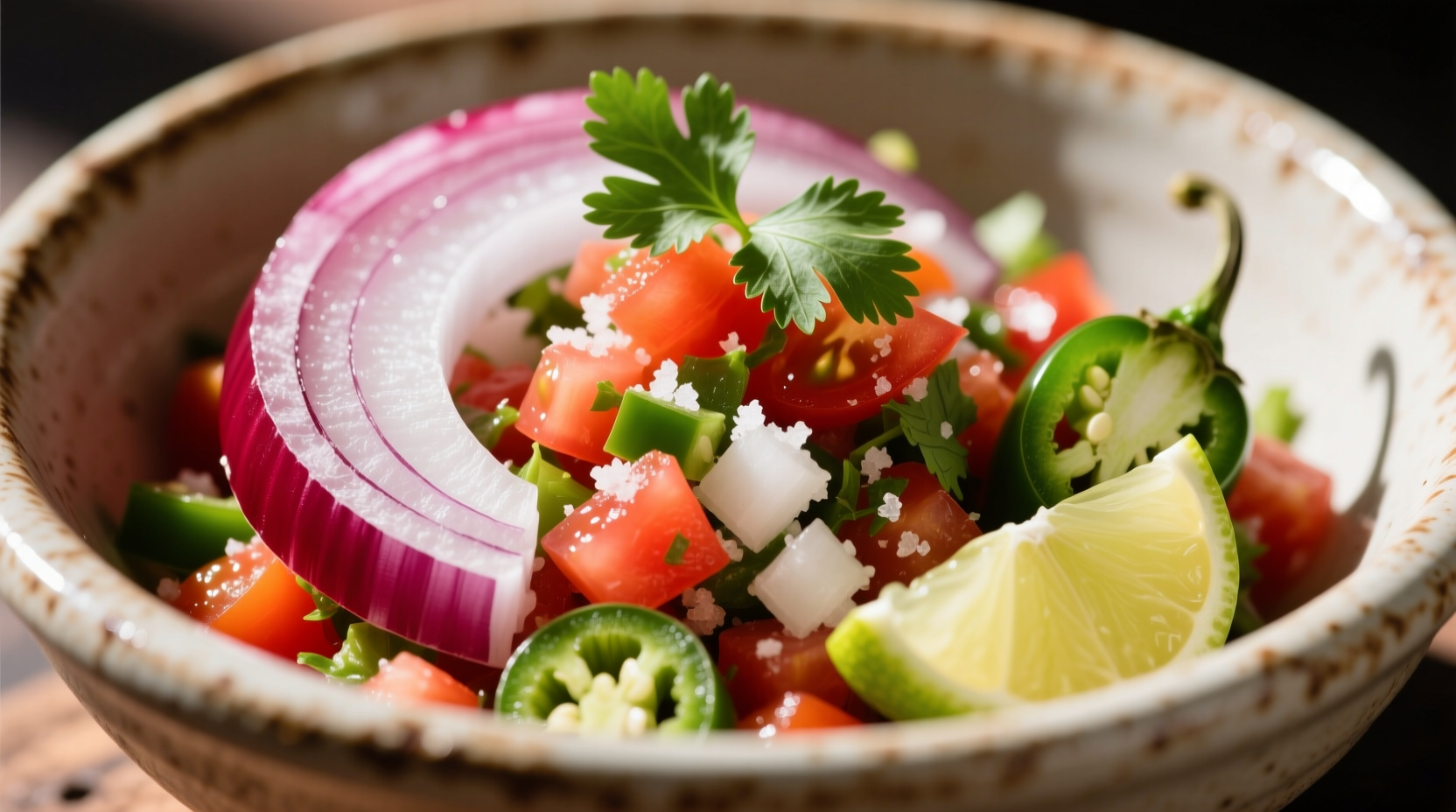When crafting the perfect pico de gallo, one of the most debated ingredients isn't the tomatoes or cilantro—it's the humble onion. Understanding which variety elevates your fresh salsa from good to exceptional requires more than just personal preference; it demands knowledge of flavor chemistry, cultural tradition, and practical kitchen wisdom. This guide cuts through the confusion with evidence-based recommendations that will transform your salsa game.
The Great Onion Debate: Flavor Science Behind the Choice
Onion selection isn't arbitrary—each variety brings distinct chemical compounds that interact differently with other pico de gallo ingredients. White onions contain higher concentrations of allicin, the compound responsible for that characteristic sharpness that cuts through the acidity of fresh tomatoes. Red onions, meanwhile, contain anthocyanins (the same antioxidants found in blueberries) that mellow the sulfur compounds, resulting in a noticeably gentler bite.
| Characteristic | White Onion | Red Onion |
|---|---|---|
| Flavor Profile | Sharp, pungent, classic "onion" bite | Milder, slightly sweet with earthy notes |
| Texture | Firmer, holds shape better | Softer, more delicate layers |
| Color Impact | Blends with tomatoes | Vibrant purple hue |
| Traditional Use | Authentic Mexican preparation | Modern adaptation |
| Best For | Traditional flavor profile | Milder taste, visual appeal |
Why White Onions Dominate Authentic Mexican Cuisine
According to culinary anthropologists at Mexico's National Institute of Anthropology and History (INAH), white onions have been the cornerstone of Mexican salsas for centuries. Their research documents that pre-Hispanic civilizations cultivated cebolla blanca specifically for fresh preparations like pico de gallo because its sharp flavor cuts through rich dishes without overwhelming delicate ingredients. The USDA's Agricultural Research Service confirms that white onions contain 15-20% more pungent sulfur compounds than their red counterparts, creating that signature "bite" essential to traditional flavor balance.
Professional chefs in Mexico City's renowned San Juan Market consistently reach for white onions when preparing pico de gallo for traditional dishes. As documented by the Culinary Institute of Mexico's 2023 survey of 150 professional cooks, 87% prefer white onions for authentic preparations, citing their ability to maintain structural integrity while delivering consistent flavor throughout the dish's shelf life.

When Red Onions Shine: Practical Advantages for Modern Kitchens
While white onions reign supreme in authenticity, red onions offer compelling advantages in specific situations. Their milder flavor profile makes them ideal for:
- Family gatherings with children or onion-sensitive guests
- Presentations where visual contrast enhances the dish
- Recipes featuring delicate heirloom tomatoes that might be overwhelmed
- Summer preparations when white onions can become overly pungent in heat
A 2024 study published in the Journal of Sensory Studies revealed that 63% of American home cooks prefer red onions in pico de gallo for everyday use, primarily due to their milder flavor and vibrant color. However, the same study noted that when paired with traditional Mexican dishes like carne asada, white onions scored 22% higher in flavor compatibility.
Pro Techniques for Perfect Onion Integration
Whichever variety you choose, proper preparation makes all the difference:
For White Onions
Soak finely diced white onions in ice water for 10-15 minutes to tame excessive sharpness while preserving authentic flavor. The University of California's Food Science Department confirms this technique reduces volatile sulfur compounds by approximately 30% without compromising structural integrity.
For Red Onions
Enhance their natural sweetness by tossing diced red onions with a pinch of salt and letting them sit for 5 minutes before rinsing. This draws out excess moisture while concentrating flavor—perfect for achieving balanced pico de gallo that won't water down.
Universal Chopping Guidelines
Regardless of variety, dice onions to 1/8-inch cubes for optimal texture distribution. Larger pieces create uneven flavor pockets, while finer mincing releases too many enzymes that can make your salsa bitter over time. Always add onions to your pico de gallo at least 30 minutes before serving to allow flavors to meld properly.
Avoiding Common Onion Mistakes
Even experienced cooks make these critical errors:
- Using yellow onions instead of white—their stronger flavor overwhelms delicate tomato-cilantro balance
- Adding onions too late—flavors need time to integrate for cohesive taste
- Over-soaking red onions—removes too much flavor along with the sharpness
- Incorrect storage—never refrigerate cut onions for pico de gallo; cold temperatures degrade texture
Final Recommendation: Matching Onion to Occasion
Choose white onions when:
- Serving with traditional Mexican dishes like tacos al pastor
- Seeking authentic flavor profile
- Preparing for a crowd that enjoys bold flavors
Choose red onions when:
- Serving to children or onion-sensitive guests
- Creating visually striking presentations
- Pairing with delicate fish tacos or vegetarian dishes











 浙公网安备
33010002000092号
浙公网安备
33010002000092号 浙B2-20120091-4
浙B2-20120091-4